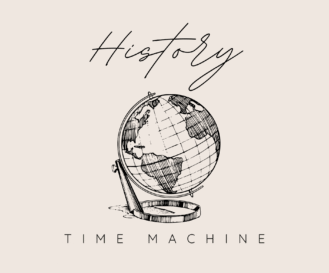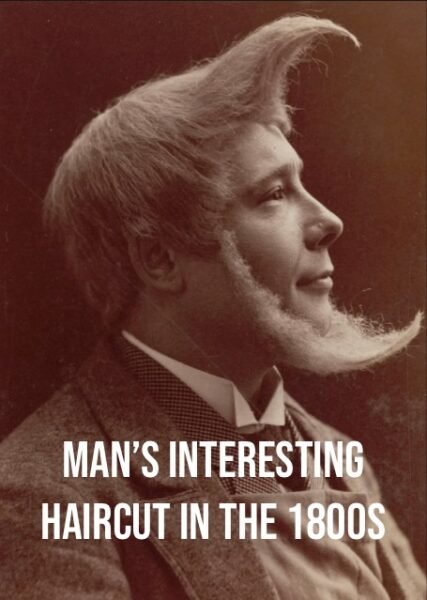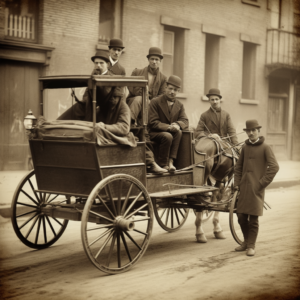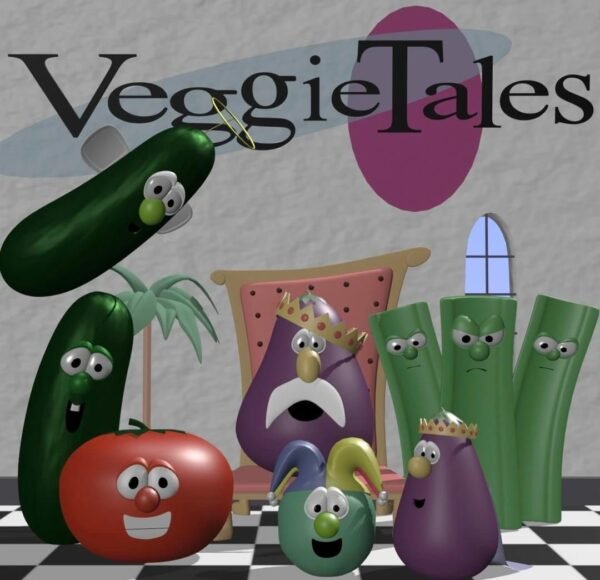
What Was Life Like for Truckers in the 1950s?
Back in the 1950s, being a trucker wasn’t just a job—it was a grind. These men (and the rare woman) spent days or weeks on the road, without the comfort of air-conditioned cabs, without phone chargers, and definitely without GPS. You had your truck, your route, your instincts—and that was it.
You didn’t have Google Maps barking directions at you. You had paper maps, scrawled notes, and the advice of older drivers passed down like gold. And when it came to eating? You figured it out on the fly.
Where truckers ate in the 1950s wasn’t about convenience—it was about trust. You looked for neon signs in the distance, parking lots filled with other rigs, or that little white building you remembered from your last trip through town. Word of mouth and habit were your guides.
Meals were simple, and time was precious. You needed a place that served real food fast—no microwaves, no fluff, just something hot, heavy, and cheap. And if they remembered your name or had your coffee poured before you sat down, even better.

How Did Truckers Find Places to Eat Without GPS?
It’s wild to think about now, but back in the day, truckers didn’t need an app to find the best food stops—they had something better: each other.
If you were new on a route, you’d ask other drivers. The CB radio might not have been widespread yet in the early ‘50s, but trucker talk at loading docks, gas stations, and weigh stations filled in the gaps. You’d hear something like, “There’s a place about 15 miles west of Springfield—white sign, gravel lot, best fried chicken you’ll find between here and Tulsa.”
Here’s how truckers figured it out:
- They followed the rigs. If the lot was full of semis, it had to be good.
- They watched for worn signs and glowing neon. The flashier the sign, the better the odds.
- They stuck to what they knew. Most had favorite stops that became routine.
- They listened to word of mouth. Stories and tips got passed driver to driver like family recipes.
- They looked for space. A good truck stop needed big lots, strong coffee, and fast service.
Some of the best spots weren’t even official truck stops—they were old-school diners with soda fountains and pie under glass, like the one in The Miller and Shoemaker Soda Fountain from 1899. Places like that laid the foundation for where truckers would stop decades later—small, personal, and made for hard-working folks on the road.

What Kind of Food Did 1950s Diners Serve Truckers?
Let me tell you—where truckers ate in the 1950s, the food was no joke. We’re talking stick-to-your-ribs kind of meals. No kale smoothies. No quinoa bowls. Just hearty, greasy, hot food served fast and with a smile (most of the time).
Diners were the go-to. These places knew how to feed men who’d been driving since 4 a.m., braving wind, snow, or sweltering highways. The menus didn’t change much, but that’s what made them great. You could walk into a roadside joint in Nebraska or Tennessee and know exactly what you were getting.
Typical truck stop diner meals in the 1950s:
- Meatloaf with mashed potatoes and a pool of gravy
- Bacon and eggs—served anytime, not just for breakfast
- Open-faced roast beef sandwiches
- Big bowls of chili or beef stew, often served with crackers
- Homemade pies—apple, cherry, and pecan were staples
- Endless cups of black coffee, poured before you even asked
It wasn’t fancy, but it was filling. And after hours behind the wheel, that hot plate of food felt like a reward.
What made it even better? The diner staff. They didn’t just slap food on the counter. They asked where you were headed, knew your name if you came through often, and maybe even slid you an extra piece of pie on a rough day.
It’s that kind of personal touch you see captured in places like The Origins of Steak n Shake—where food wasn’t just fast, it was part of a culture built around serving folks who worked hard.

What Made a Diner Trucker Approved in the 1950s?
In the world of 1950s truckers, not every diner earned their loyalty. The best ones weren’t always the biggest or flashiest—but they had a few things that mattered more than anything else.
Here’s what gave a diner “trucker-approved” status:
- Big parking lots—if a driver had to circle more than once, they were gone
- Speedy service—truckers were on a clock, and they couldn’t sit around
- Friendly waitstaff—a warm hello and a strong coffee went a long way
- Good food, consistently—no surprises, no skimping on portions
- Clean bathrooms—seriously, this was a huge deal
- Word of mouth credibility—if another driver vouched for it, that was gold
Sometimes it was a gas station diner combo. Sometimes it was just a no-name café off a two-lane highway. But truckers remembered the good ones. They’d plan their routes around them. Some would even go a little out of their way for a hot meal that felt like home.
And once the interstate system took over and the big chains started popping up, a lot of those mom-and-pop stops started disappearing. But for a while? They were sacred ground for drivers across the country.

Were There Truck Stops Like Today?
The short answer? Not even close. Where truckers ate in the 1950s looked nothing like the massive travel plazas we know today with fast food chains, big-screen TVs, and every snack imaginable. Back then, most truck stops were small, independently owned, and downright bare bones.
If you were lucky, a stop had a gas pump, a simple diner, and a phone booth. No convenience store packed with energy drinks and 40 brands of beef jerky. You’d be more likely to find a crusty ham sandwich under a glass dome and a hand-lettered sign that read “Restrooms for Customers Only.”
Here’s what a typical truck stop offered in the 1950s:
- A two-pump service station—full-service, no self-serve
- A roadside diner or café with 5 or 6 booths
- Truck parking on gravel or dirt, not a paved mega-lot
- A basic bathroom, maybe with a leaky sink and a fan that barely worked
- A bulletin board full of handwritten ads, load requests, and lost items
And you know what? That was enough. Because it wasn’t about flashing lights or corporate menus—it was about real food, a decent coffee refill, and maybe someone behind the counter who remembered your name from two weeks ago.
Places like Reeds Corner Station in Moberly, Missouri captured that feel perfectly—humble, local, and a real part of a trucker’s routine.

Examples of Roadside Spots That Survived
While many of those classic 1950s trucker diners have faded into history, a few managed to hang on—either because they modernized just enough to survive or because their old-school charm kept folks coming back.
Some early roadside spots even laid the groundwork for what would become major chains. Take Steak n Shake, for example. Founded in 1934, it wasn’t just a burger joint—it was one of the first places where working folks, including truckers, could count on consistent food and service while on the road.
Others stayed alive through sheer loyalty. Some diners are still open today because truckers kept talking about them. If a place had strong coffee, a deep-fried pork tenderloin, and enough parking space, it had a fighting chance.
And while the signs might’ve faded and the floor tiles got worn thin, the spirit of those places is still alive. You can still find family-owned diners along old highways that serve the same menu they’ve had since 1955—and you’ll still spot a rig or two parked out front.
That’s the beauty of where truckers ate in the 1950s—it wasn’t just about the food. It was about feeling like someone had your back, even if you were 600 miles from home.

What Can We Learn From How Truckers Ate Back Then?
Looking back at where truckers ate in the 1950s, it wasn’t just about filling up—it was about slowing down. There were no apps to tell you which diner had five stars or who made the fluffiest pancakes. You trusted your gut, your route, and the guys who drove it before you.
There’s something about that kind of living that still hits today.
Here’s what stands out:
- Simplicity worked. The best meals didn’t come from a chain—they came from someone’s grill who cared.
- Loyalty mattered. If a diner treated you right, you came back—and you told others.
- Community made the road less lonely. Truckers weren’t just drivers. They were part of a larger network that shared advice, meals, and stories.
- You didn’t need tech to find something good. Just experience, instinct, and a little bit of trust.
- Meals were a moment of peace. Between long hauls, bad weather, and breakdowns, a hot plate of food felt like home.
We’ve come a long way since then—literally. But maybe we lost something in the process. The freedom of the open road used to come with a side of meatloaf and a smile from a waitress who called you “hon.” Not a QR code and a microwave burger.
So next time you’re driving and pass a no-name diner with a gravel lot and five rigs parked out front… maybe pull over.
Because where truckers ate in the 1950s wasn’t just a stop. It was a tradition—and a slice of Americana that still lingers on the side of the road.
As an Amazon Associate we earn from qualifying purchases through some links in our articles.




